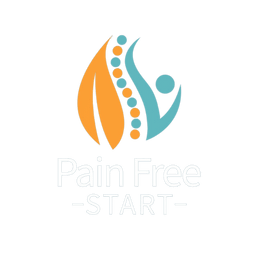Introduction
Tennis elbow, or lateral epicondylitis, isn’t just a problem for athletes. Many people experience this painful condition due to repetitive hand and wrist movements, often aggravated by poor ergonomics. The way you grip, type, or use tools can place unnecessary strain on your tendons, increasing your risk of injury.
One way to prevent and manage tennis elbow is by using ergonomic equipment that supports natural movement and reduces strain. In this blog, we’ll explore how small ergonomic changes can make a big difference in protecting your elbow.
How Poor Ergonomics Contributes to Tennis Elbow
Many everyday tools—such as a standard computer mouse, heavy hand tools, or even kitchen utensils—force your wrist and fingers into unnatural positions. This added tension increases strain on the tendons in your forearm, which can eventually lead to tennis elbow.
Using ergonomic alternatives can help maintain a neutral wrist position, reducing unnecessary tension and load through the tendon. Reducing load is an important component in improving this issue. However, to fully resolve it will take a more comprehensive approach as tendon health and structure will need to be addressed.
Top Ergonomic Solutions for Tennis Elbow
1. Use an Ergonomic Mouse
If you spend long hours working at a computer, switching to an ergonomic mouse can relieve stress on your forearm. Traditional mice require excessive wrist movement and gripping, while an ergonomic mouse encourages a more natural hand position, reducing strain on the elbow.
2. Try Wrist Support
A wrist rest or ergonomic keyboard can help keep your wrist in a neutral position while typing. This reduces excessive strain on the forearm muscles and tendons that are often involved in tennis elbow pain.
3. Choose Cushioned Tool Handles
If your work involves manual labor, investing in tools with cushioned or contoured handles can significantly reduce strain on your grip. Over-gripping tools with hard, narrow handles forces the tendons to work harder than necessary, which can worsen your symptoms.
4. Adjust Your Workstation
Your workstation setup plays a key role in preventing and managing tennis elbow. Ensure your desk, chair, and screen height allow for proper arm positioning, and avoid overextending your wrist while typing or using a mouse.
The HSE workstation assessment is a great tool to help you identify and correct ergonomic issues in your setup. Check it out [here].

Making the Right Changes
Ergonomic adjustments are just one part of the solution for tennis elbow. If you’re serious about long-term recovery, you need a structured program. That’s exactly why I created my Tennis Elbow Program—it’s everything I do with patients in the clinic, all in one place, and for less than the cost of a single appointment.
👉 Find out more here – Tennis Elbow Program £59
Not Sure If You Have Tennis Elbow?
If you’re unsure about your symptoms, take advantage of my FREE Elbow Assessment Masterclass, where we’ll assess your elbow together and determine if you have tennis elbow.
[Join or learn more about the FREE Tennis Elbow Assessment Masterclass Here]
Conclusion
Small ergonomic adjustments can have a big impact on preventing and managing tennis elbow. By making simple changes—such as using an ergonomic mouse, wrist support, or cushioned tools—you can reduce unnecessary strain and support your recovery.
For more expert guidance on managing tennis elbow, check out my Online Tennis Elbow Program, designed to help you resolve this frustrating condition with targeted exercises and professional advice.
Take care, Helen
Helen Manders BSc (Hons) MCSP HCPC
Chartered Physiotherapist Treating Tennis Elbows Since 2001




